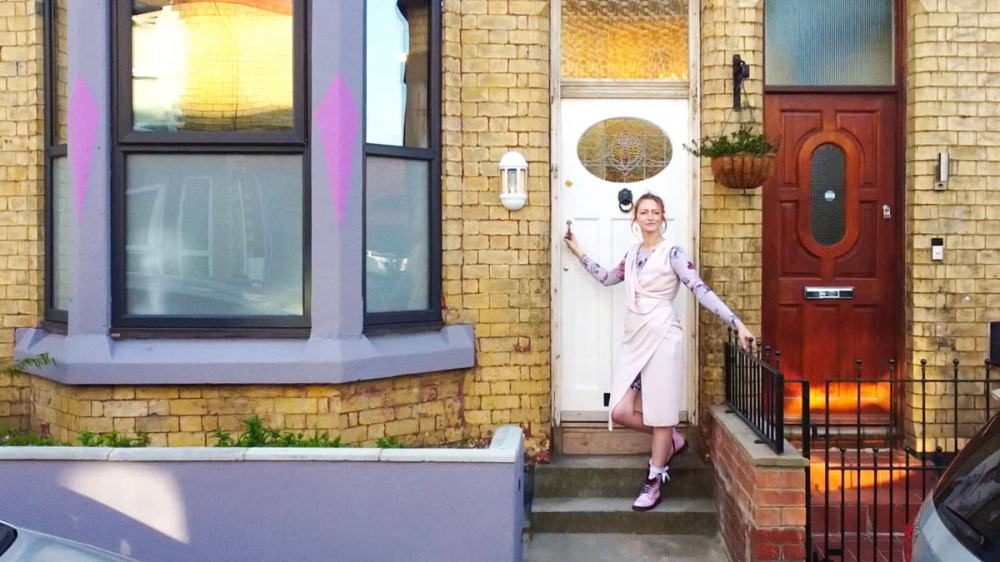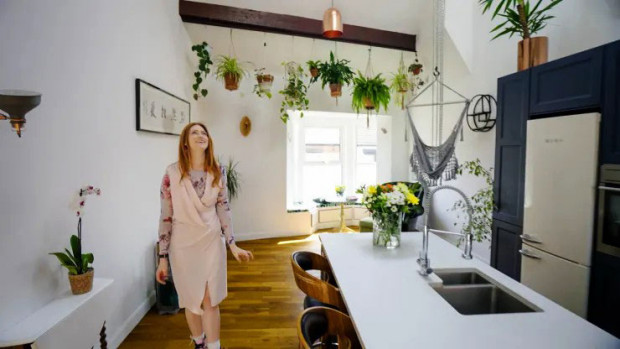
Foreign Property News | Posted by Zarni Kyaw
In February 2020, I officially got the keys to my new home: a two-bedroom, 796-square-foot Victorian house that I bought for £1.
I purchased it as part of a “homes for a pound” program created to revive the Webster Triangle, a small run-down area in Liverpool.
But there was a catch: the home was in complete disrepair. To qualify, I had to be a first-time homeowner and be able to fix it up within a 12-month period. The council estimated that the renovations would cost $61,400.
When I applied for the program in 2015, I was a 28-year-old graduate student without much in the way of savings. I didn’t have all the funds I needed, but I submitted my application anyway.

(I flipped the configuration of my house so I could maximize natural light. Now the bedrooms are on the first floor, and the kitchen and living area is upstairs. Photo: Maxine Sharples)
By the time I was off the waiting list, my financial situation had changed. I inherited a property from my dad, who had passed away, and sold it to get the funds for the renovations.
The house had been abandoned for 15 years. The brickwork was crumbling, there was a leaky roof, a rat infestation, asbestos, and no power or heating system.

(When I started the renovations, there were crumbling bricks everywhere I looked. Photo: Maxine Sharples)

(Managing a full renovation isn’t for everyone. Having enough money is only the first hurdle; you need the right people to successfully see things through. Photo: Maxine Sharples)
I moved the bedrooms to the first floor, and the kitchen and living room to the second floor. Then I added skylights to the roof.
I paid an architect $1,064 to draw up the blueprints. Many of the contractors I talked to laughed at my proposed reconfiguration of the house. The cheapest quote I got was still $37,600 over my budget, which was the entirety of my savings. But I was undeterred.
In May 2020, at the height of the pandemic, I quit my job as a project officer at a university and started to do the renovations on my own with limited tools.
Due to the lockdown restrictions, I was granted a 12-month extension. But I was also dealing with joblessness and a breakup. It was clear that I couldn’t do everything alone.
I started to blog about the renovation process in August 2021. When I got discouraged, looking back through my Instagram and taking stock of what I actually achieved renewed my vigor.

(I’m so grateful for the help of my friends. I know I wouldn’t have been able to finish the project without them. Photo: Maxine Sharples)
This was especially helpful for my resolve, since most of that summer, I was living in a camper van in a local park in Liverpool.

(The open kitchen and living area is one of my favorite places in the house. The natural light makes it the perfect spot for my plants to thrive. Photo: John O’Mahony for CNBC Make It)
But with my story, I was able to drive readers to my Instagram account and build a community of followers. Some companies even reached out to offer me discounted products.
In May 2022, after 27 months of work, the house was signed over to me. I was the last homeowner to complete a renovation. I spent a total of $74,000 on labor and materials.
Ref: This 36-year-old bought an abandoned house for just $1 and fully renovated it—look inside her ‘dream home’ (cnbc)









